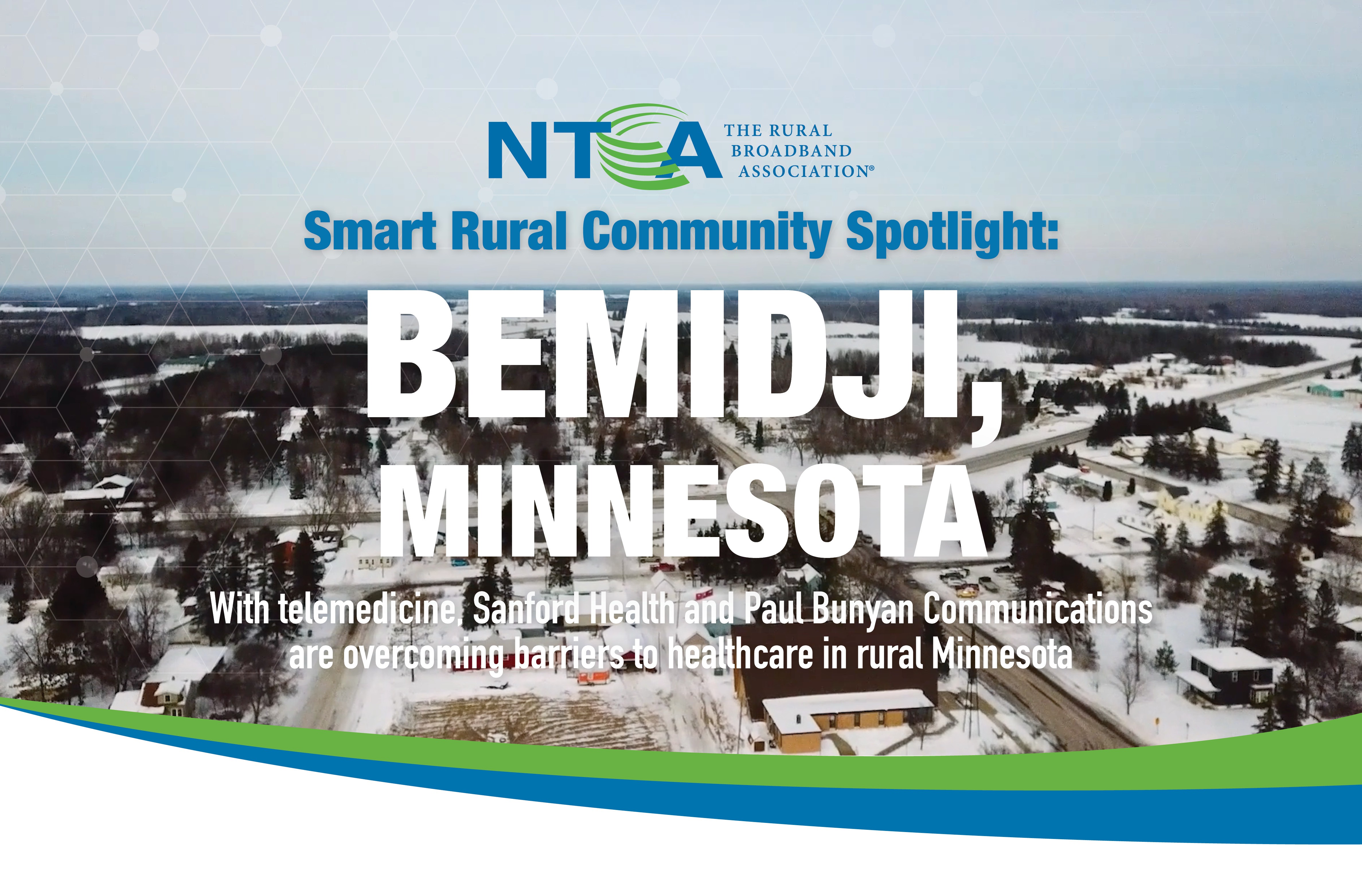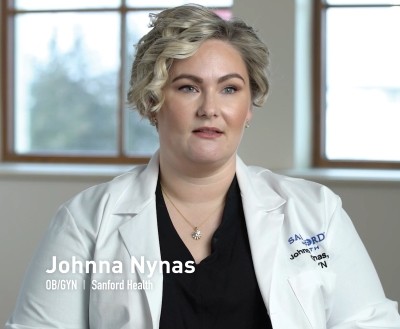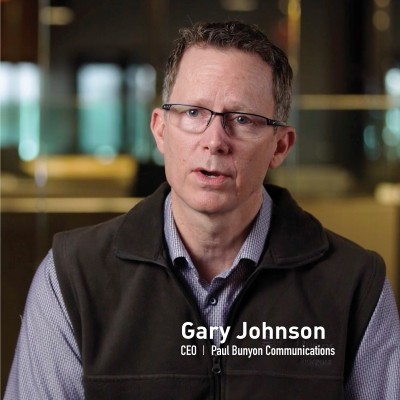Every day, women across America discover that they are pregnant. It can be one of the most exciting times in a woman’s life: making phone calls to family and friends, making lists of baby names, making plans.
But for too many women, as the initial excitement wanes, a harsh reality sinks in: they may not be able to access the health care that they, and their baby, need.
The picture of obstetric care in rural America is a bleak one. Rural areas represent 23 percent of American women ages 18 and older; however, only 6 percent of practicing obstetrician-gynecologists in the United States practice in rural areas.
And according to Dr. Johnna Nynas, OB/GYN at Sanford Health in Bemidji, Minnesota, this gap in service has only grown wider amidst the COVID-19 pandemic.
“With a high risk population like pregnant women who may have other medical complications, it's scary for them to come in not knowing, especially in the beginning of the pandemic, what the risks are to them or to their baby,” she said.
With high-speed broadband from Paul Bunyan Communications, Dr. Nynas and her team at Sanford Health are closing that gap—providing safe, reliable telehealth services for women in one of the most rural areas of Minnesota.
“Telemedicine has created a space where we can make sure that we provide every woman care, the appropriate care, every time,” Dr. Nynas said. “Having an excellent and strong partner in our community like Paul Bunyan Communications has been really critical to ensure that I can do my job to the best of my ability during this pandemic.”
Traveling Two Hours to Care
Bemidji, Minnesota is a small city surrounded by several hundred miles of farmland and forest. At least two hours from the next nearest cities of Duluth, Grand Forks, and Minneapolis, many rural residents rely on Bemidji for their commerce, education, and healthcare needs.
With its isolated location and foreboding winters, it’s a region that many utility providers wouldn’t touch. But Paul Bunyan Communications has served this area of north-central Minnesota for nearly 70 years.
“We really are delivering those services to rural areas that otherwise wouldn't be here,” said CEO Gary Johnson. “If you look at why we were formed in 1952, it's because those rural farmers and business people could not get basic voice connectivity. And that mission hasn't changed. Here we are nearly 70 years later, we're connecting rural areas with very robust gigabit broadband, and it's really changing what is possible in this region.”
Today, Paul Bunyan Communications’ fiber gigabit network covers more than 6,000 square miles. Among their largest customers is Sanford Health.
“We have a long, great relationship with Sanford Health,” Johnson said. “We're both trying to serve this rural region, us with broadband and them with very advanced medical care. We’ve been able to leverage the capabilities of our network to assist them in what they're trying to do for their mission.”
For Dr. Nynas, that mission is providing high-quality, consistent health care to all women in rural Minnesota. This means breaking down the many barriers they face—the first being a sheer lack of providers in their area.
“Half of all counties in the United States do not have an obstetric hospital providing delivery services for their women,” she said. “In our region alone, in the past year, we've lost two different labor and delivery units who are no longer providing those services. Those women still live in those areas and need care.”
This has left women with no other choice but to drive up to two and a half hours just to receive prenatal care. And in northern Minnesota, this isn’t just lost time; it’s a potential safety hazard.
“Sometimes it's two feet of snow. Sometimes it's brutally cold temperatures with dangerous wind chills. And you're traveling on very isolated roads where there's not a lot of other towns,” Dr. Nynas said. “So the possibility of your car sliding into a ditch or even hitting a wild animal are very real.”
Empowerment through Access
By the time COVID-19 hit Minnesota in the spring of 2020, Dr. Nynas and her colleagues had already been considering ways to integrate telemedicine into their services. As crisis often does, the pandemic kicked their innovation into high gear.
“We started a program called Baby Beats, where women can get a Doppler to listen to their baby at home and a blood pressure cuff to monitor their blood pressure,” Dr. Nynas said. “And there's certain visits that we schedule to be seen at the prescribed intervals as a virtual visit, similar to a Zoom or Skype call.”
During these virtual visits, a patient checks in through the Sanford Health app, triggering a notification to Dr. Nynas that the patient is in her “waiting room.” The two are connected via video chat, and aside from the fact that it is happening over a computer screen, the appointment proceeds as normal: the patient steps on their scale and reports their weight to Dr. Nynas, followed by their blood pressure. Then, Dr. Nynas will ask her usual check-in questions: How are they doing? How are they feeling?
Given the deeply personal nature of prenatal care, when these telehealth visits began, both Dr. Nynas and her patients worried that the lack of face-to-face interaction would impact the quality of these appointments.
“A lot of my patients that have used it have been pleasantly surprised at how it's, in a lot of ways, more personal,” Dr. Nynas said. “It's one thing to come to my office and be in my environment and talk about what's going on. It's very different to invite me into your home, because I can see what's going on in your house around you. I can hear the chaos from other kids in the background. It really gives me a good insight into who they are, where they live, where they're coming from. And so I feel very connected to my patients who I see virtually. It's been wonderful.”
While a year has passed since the beginning of the pandemic and safety protocols have allowed in-person visits to become more frequent, Dr. Nynas explains that virtual visits will not be going away anytime soon. With this new technology, she has seen an increase in women attending appointments more regularly and complying more closely with their care, which can have a significant impact on maternal and neonatal outcomes.
This access has been critical in bridging not just geographic, but demographic gaps in service. Bemidji is a central hub between three reservations: Leech Lake, Red Lake, and White Earth. Dr. Nynas has patients who live on these reservations who do not have access to reliable transportation, or are dependent on family members to drive them to appointments.
“Telehealth creates an opportunity for them to be empowered, to access their own medical care without being dependent on other people,” Dr. Nynas said. “That is a very powerful movement for women in general, and especially women of color.”
Only the Beginning
In a year of so much uncertainty, telemedicine has allowed Dr. Nynas and her team to continue providing consistent, essential medical care to women in rural Minnesota—and it wouldn't have been possible without broadband.
“It's amazing how broadband can level the playing field in terms of opportunities. And we're seeing now with the pandemic more than ever the challenges that are introduced if you don't have equitable broadband,” Johnson said. “We've never had a more clear example of how inequalities affect people's everyday lives, and access to broadband is a critical piece in their healthcare.”
The implications of this work extend beyond obstetric care, to other services that can be difficult to come by in rural areas. Dr. Nynas has seen colleagues successfully leverage telemedicine to provide mental health care, check in on chronic medical concerns, and conduct visual dermatological exams.
And these services, she says, are only just the beginning.
“We're finding more and more opportunities to use telemedicine to everyone's benefit every single day. And it's really allowing for a lot of creativity within the medical field, which is what we do. Medicine is an art, it's not a science,” Dr. Nynas said. “I think the benefits of telehealth practice are really limitless.”
Learn more about what it means to be a Smart Rural Community at www.smartruralcommunity.org.





